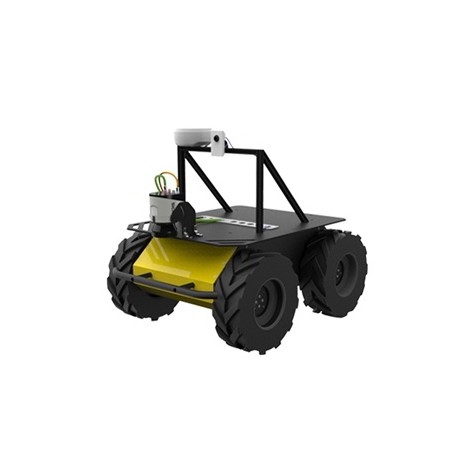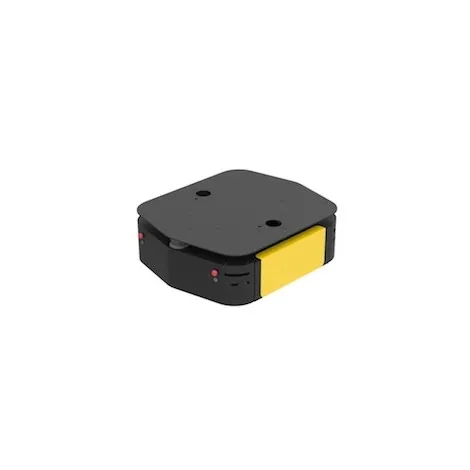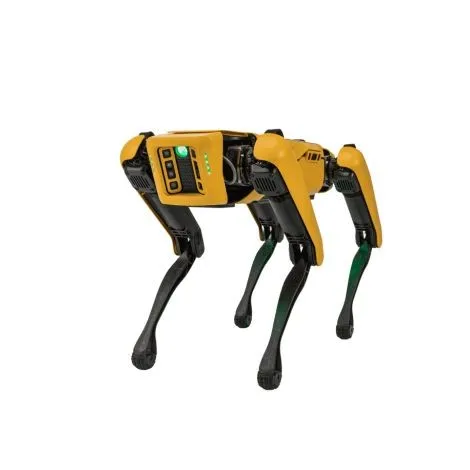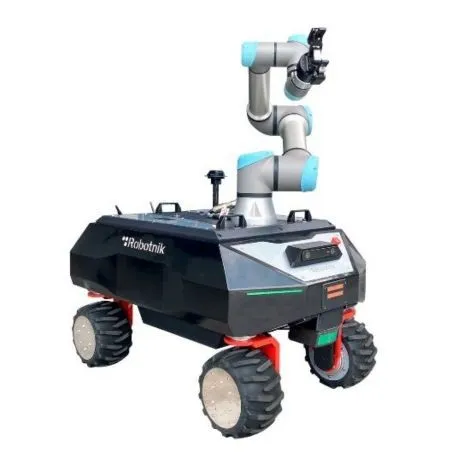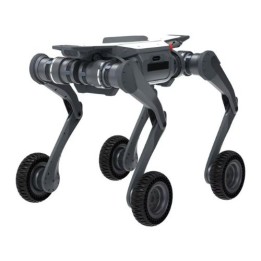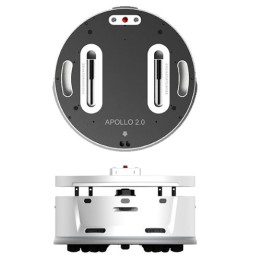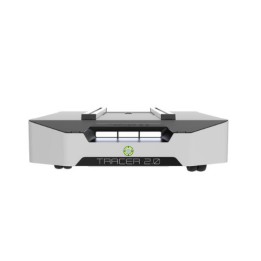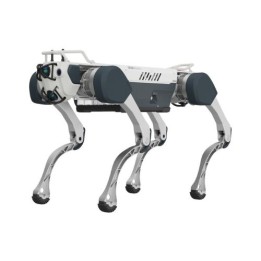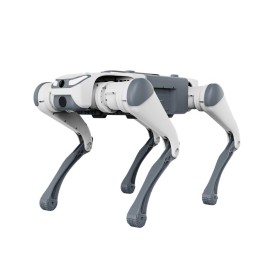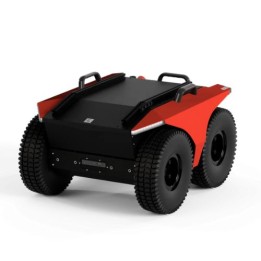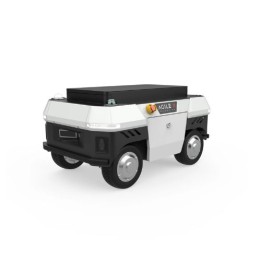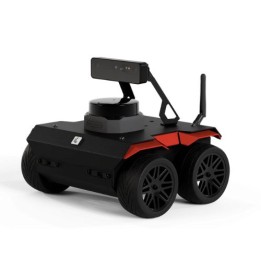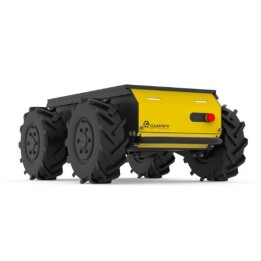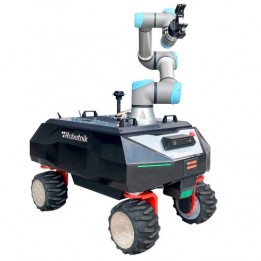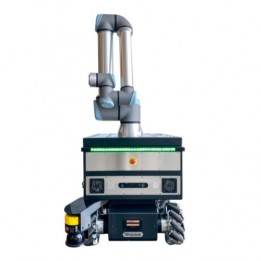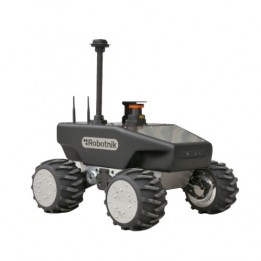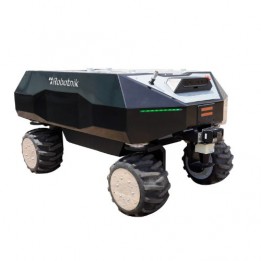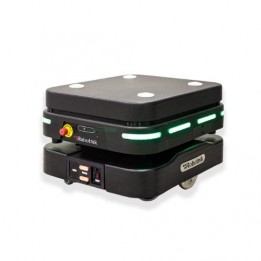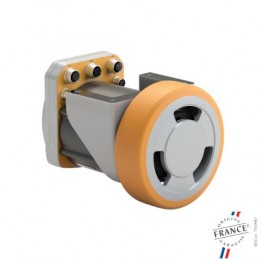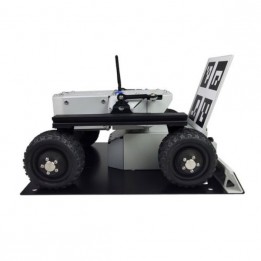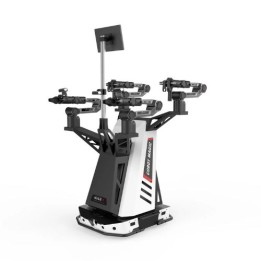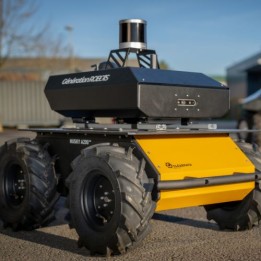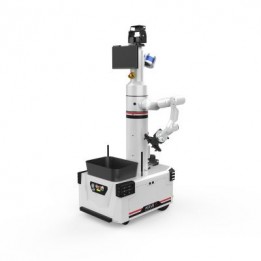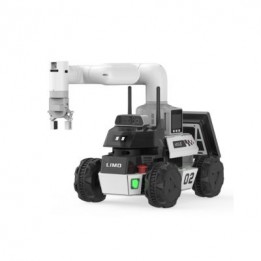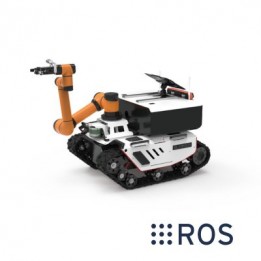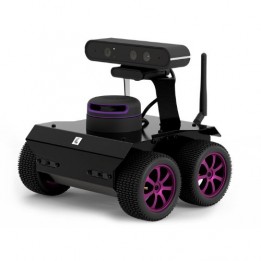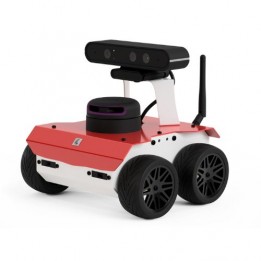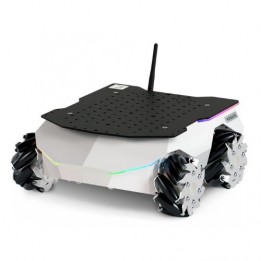Mobile robots
Mobile robotics can be a real game changer in many projects. Mobile robots are powerful tools, which autonomy can take over from humans strenuous or dangerous tasks.
What is an autonomous mobile robot?
An autonomous mobile robot is a robot that can move around in an open or closed space. It does not remain stationary in one position. The autonomous mobile robot can map its environment and navigate on its own, without being controlled by an operator.
Autonomous mobile robots do not need any external relays to operate (such as beacons). Instead, they use SLAM (Simultaneous Localization And Mapping) technology, which enables them to build a map of their environment in real time, and do some self-localization. If needed, autonomous mobile robots can also be remotely operated.
Usually, an autonomous mobile robot is made up of:
- A chassis (with motors and controller)
- An embedded computer
- A battery
- Sensors (at least a LiDAR)
- Actuators
The sensors and actuators will change depending on the tasks the robot has to perform.
Types of sensors:
- Thermal sensor
- Panoramic camera
- Gas sensor
- Motion sensor
- Microphone
- Etc
Type of actuators:
- Robotic arm
- Screen
- Speakers
- Drone
- Etc
Mobile robots: missions and applications
In which situations can mobile robotics be a real advantage? We won't list the many tasks a robot can take over from humans, there are too many. We will list the one we are familiar with at Génération Robots. For example, for inspection tasks in hazardous environments, mobile robots are essential for ensuring safety and efficiency.
Missions where a robot can be essential, or mandatory:
- Nuclear dismantling
- Space exploration (rovers, sample collection, etc)
- Heavy equipment transport (construction sites, rescue missions, scientific missions, etc.)
- Transport of mail, medication, light equipment, within a single building, a complex or a district
- Robotised cowshed cleaning
- Surveillance and preventive maintenance of sensitive sites (SEVESO sites, airports, oil & gas)
- Etc
How to choose the right mobile robot for your project?
The environment and the terrain are both major considerations, as they cannot be easily changed.
Depending on the environment and the terrain on which the robot will drive, as well as its missions, the locomotion will be different:
- Mecanum wheels ➡ allows lateral movements, suitable for warehouses and indoor navigation (Clearpath Robotics' Dingo robot type)
- All-terrain wheels ➡ for outdoor navigation, suitable for exploration missions, agriculture, etc (RR100 robot type from Generation Robots)
- Tracked ➡ outdoor navigation, on uneven terrain (potholes, small ditches, rocks, steps, etc) (Bunker Pro robot type)
- 4 legs ➡ allows robots to move on stairs or rocks (Spot robot type). Some hybrid models, such as the B2 from Unitree Robotics, have wheels at the end of their legs.
You will also need to consider the following features:
- The payload (does the robot need to carry heavy equipment?)
- Autonomy (an important factor in surveillance and security missions)
- Agility (speed and turning radius)
- The budget allocated to the project
Other factors, such as the possibility to quickly add extra addons, can also be important. Agilex mobile robots are equipped with rails that allow for quick customization.
Finally, ROS/ROS 2 compatibility is often a major factor in the choice of a mobile base, especially for research and R&D centers. All our mobile robots are ROS compatible.
The PUMA Pro is a wheel-legged quadruped robotic platform that combines computing power, industrial robustness, and extreme mobility. It is designed for demanding environments and advanced research missions.
The Apollo 2.0 indoor mobile robot from Slamtec is a medium-sized autonomous platform designed for advanced robotic applications such as autonomous navigation, multi-floor delivery, intelligent obstacle avoidance, and multi-robot coordination.
The Tracer 2.0 is a two-wheel differential robotic base designed for advanced research environments and industrial applications. It combines speed, power, endurance, and openness for development to meet the needs of researchers and engineers.
The X30 from Deep Robotics embodies technological excellence in quadruped robotics. It is a key solution for industries requiring autonomous, safe, and reliable inspections in extreme or complex environments.
The Lite 3 is an advanced quadruped robot designed to combine power, agility, and flexibility, with a modular structure suitable for advanced robotics developments.
Lynx is a compact and rugged autonomous ground vehicle (UGV), designed for indoor and outdoor operations.
UMR (Joint Research Unit) is an advanced and versatile robotic platform. With its innovative design, integrated NAVIS navigation system, and independent hub motors, UMR adapts to various applications and excels in challenging environments.
ROSbot 3 and ROSbot 3 PRO are indoor mobile robotic platforms, specifically designed for research and education.
The A300 land drone from Clearpath Robotics is a robust mobile platform capable of carrying 100 kg, with a range of up to 12 hours and ROS 2 Jazzy compatibility for easy sensor integration.
RB-VOGUI+ is a versatile autonomous mobile manipulator designed for transport and handling tasks both indoors and outdoors, with a payload capacity of 200 kg on the platform and 5 kg with the UR5e robotic arm.
The RB-KAIROS+ offers a complete and modular solution to enhance the capabilities of Universal Robots cobots, allowing flexible and efficient automation for industrial environments.
The RB-SUMMIT is an autonomous mobile robot designed for indoor and outdoor R&D applications, offering exceptional versatility, flexibility, and modularity.
The RB-VOGUI is an Autonomous Mobile Robot (AMR) designed for indoor and outdoor logistics tasks, offering versatility and high mobility.
RB-THERON is a modular solution based on ROS architecture, ideal for improving the efficiency of indoor logistics processes.
The SWD® 125 drive wheel, safe for AGV/AMR, offers exclusive features, compatibility with safety scanners, and supports up to 250 kg with SIL2/PLd safety level.
Prepare a docking station for your Leo Rover to meet all your land robot's needs!
An open source and comprehensive remote-controlled robotic platform, featuring enhanced hardware for optimal performance.
Génération Robots' engineering design department (GR Lab) has developed a ROS research and development kit, adaptable to all our mobile bases: AgileX, Clearpath, Husarion...
The Cobot S provides a comprehensive solution for mobile collaborative robots, incorporating high-performance industrial computers, a LiDAR, an IMU, a multi-DOF robotic arm, as well as visual perception.
The LIMO COBOT is a composition of the LIMO PRO, a ROS development and learning platform, equipped with a Mycobot 280 robotic arm.
A high-performance autonomous Cobot Kit designed for educational research in robotics and industrial development.
The advanced ROSbot 2 Pro robotic platform has been specifically designed to provide a comprehensive experience in the field of autonomous robotics, promoting learning and development.
The ROSbot 2R Mobile Robot is an advanced robotic platform designed to provide a comprehensive learning and development experience in autonomous robotics.
Discover the ROSbot XL Mobile Robot by Husarion, an autonomous mobile robotic platform designed for Research and Development, rapid prototyping, and creating custom robots for a variety of indoor applications.

